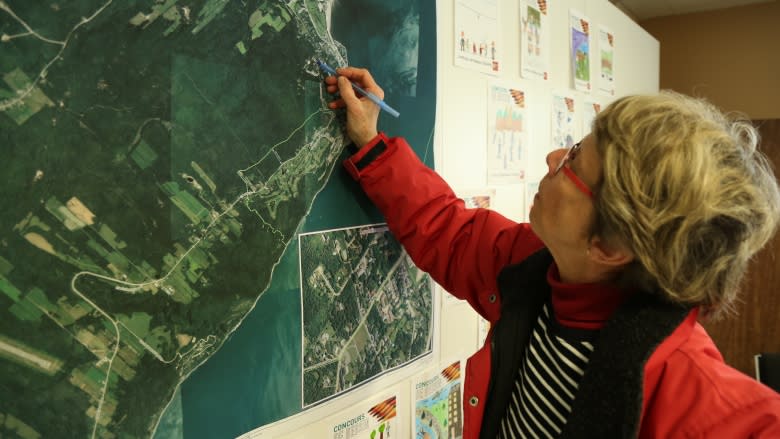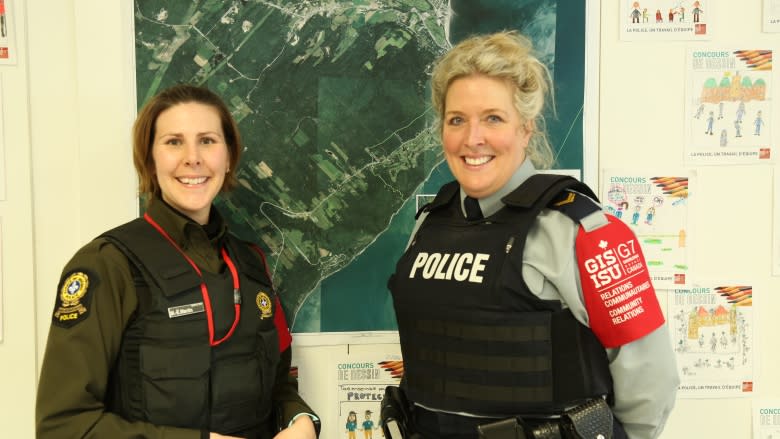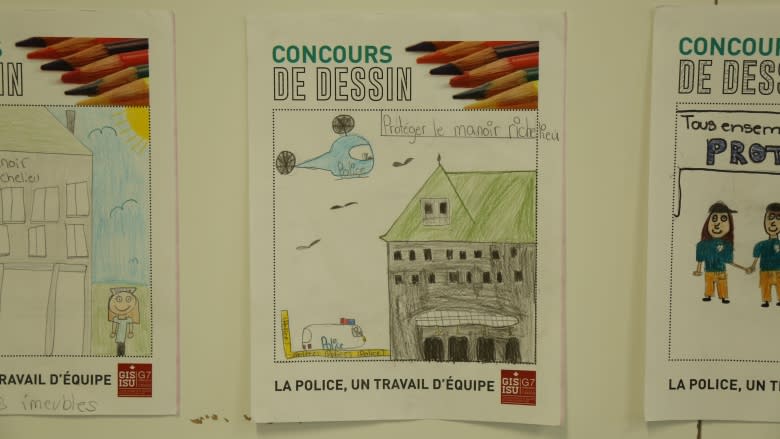Security measures take root in Quebec town as G7 nears
People who live in La Malbaie, Que., are beginning to see what it really means to invite world leaders to spend a weekend in their small municipality.
Heads of state from Germany, France, Japan, Italy, the United States, United Kingdom and Canada will make their way to the coastal town nestled along the St. Lawrence River, about 150 kilometres east of Quebec City, for their annual Group of Seven Summit (G7) on June 8 and 9.
The meeting will also mark Donald Trump's first official visit to Canada as president of the United States.
While the G7 is still months away, security measures are already becoming more and more visible.
One that is hard to miss is the roughly three-metre tall security fence built around the Manoir Richelieu and the Casino de Charlevoix, where the summit will take place.
The heavy fence is being built in the wooded area that surrounds both buildings. Anchored into the ground, it will block all road access to the site.
Referred to as the interdiction zone, the fenced-in area will only be accessible to heads of state, their staff, police and people who work at both venues.
Children concerned with flyovers
"It's not the fence of the Summit of the Americas," said Corporal Isabelle Michaud of the Royal Canadian Mounted Police (RCMP), referring to the barricade erected during the 2001 summit in Quebec City.
That fence was more than three kilometres long and was anchored by concrete blocks.
It was breached by anti-globalization protesters during the summit that made international headlines.
Corporal Michaud is with the G7's Integrated Security Unit (ISU), which includes two RCMP and two provincial police officers.
They've been stationed in La Malbaie since September to answer people's questions and give information about the summit.
"We patrol a lot, we go to the mall, we go to every place we can reach people," said Michaud.
Michaud said military ships and helicopters have also started showing up in La Malbaie to scope out the coastal town.
"Which is normal, to be able to see the lay of the land," Michaud said.
The flyovers have raised questions from local children. That's why the ISU has been touring schools in the area to talk to hundreds of students.
"We've been through every primary school and we've done a presentation about the summit," Michaud explained.
Checkpoints for commuters
While the occasional ship and helicopter has garnered some concern from locals, Michaud said the majority of questions she and her colleagues are fielding have to do with the extended security perimeter around the site of the G7.
The rectangular swath of land which will be under heightened surveillance is about 10 kilometres long and several hundreds meters wide.
Roughly 1,000 residents live in the belt dubbed the restriction zone.
The area won't be fenced in, but will be equipped with several checkpoints during the summit.
That means people who live and work in that area will require a special photo ID to enter and travel about.
That's the case for Danielle Amyot. She only found out this week that she'll need a pass to travel from her home in the restriction zone to her workplace in in Sainte-Irénée, about 15 kilometres away.
She admits the event's security measures will bring on some inconveniences when it comes to travelling, but she thinks the G7 will be good for business and tourism in the long run.
"Once they've seen Charlevoix and the way that we welcome people, I think they will come back," Amyot said.
She said overall all people are looking forward to the summit, but also for the whole ordeal to be over.
"I think it will be an interesting event."
Controversy over free speech zone
Heads of state and policy makers aren't the only ones who are expected to roll through town in June.
The ISU has also announced the free speech zone meant to accommodate protesters will be roughly 1.5 kilometres away from Manoir Charlevoix.
Located in the parking lot of the Musée de Charlevoix, within the restriction zone, the designated protest area will be include a 1.5 kilometre fence.
"This is the closest they could be," said Michaud. "That's the best option so far."
Groups that plan to protest the G7 say they have a better idea where they should be allowed to protest.
"We think the whole country should be a free speech zone," said Brent Patterson, the political director of the Council of Canadians, a public interest group.
Patterson says having a designated protest zone far away from where the actual summit is happening means leaders won't see protesters.
"Political leaders need to feel pressure, they need to know people care and to hear what people have to say," said Patterson.
Meanwhile, Danielle Amyot says she's not concerned about people showing up in her town to demonstrate.
"We are allowed to protest in Canada, thank God, " Amyot said.
"We'll just hope the security will be there to keep other people, who are just coming here to be on TV, from breaking anything."






